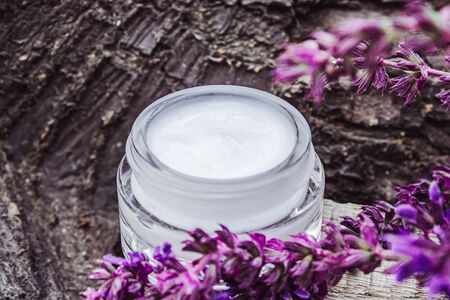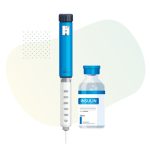1. Understanding Microneedling and How It Works
Microneedling has become a popular skincare treatment, known for its ability to improve skin texture, reduce fine lines, and enhance overall skin health. But how does it work, and why are so many people opting for this procedure?
What Is Microneedling?
Microneedling, also known as collagen induction therapy, is a minimally invasive cosmetic procedure that involves using a device with tiny needles to create micro-injuries in the skin. These micro-injuries trigger the bodys natural healing process, stimulating collagen and elastin production.
How Does the Process Work?
The procedure typically follows these steps:
Step-by-Step Process of Microneedling
| Step | Description |
|---|---|
| Consultation | A skincare professional assesses your skin type and concerns to determine if microneedling is right for you. |
| Preparation | Your skin is cleansed, and a numbing cream is applied to minimize discomfort. |
| Treatment | A microneedling device is moved across the skin, creating controlled micro-injuries. |
| Aftercare | Soothing serums or moisturizers are applied to aid healing and hydration. |
| Recovery | Mild redness and sensitivity may occur for a few days as the skin heals. |
Benefits of Microneedling
This treatment offers several benefits, making it a go-to option for those looking to improve their skin:
- Boosts Collagen Production: Helps reduce fine lines and wrinkles.
- Evens Skin Tone: Reduces hyperpigmentation and acne scars.
- Minimizes Pores: Enhances overall skin texture.
- Improves Product Absorption: Allows serums and skincare products to penetrate deeper.
- Non-Invasive: A safe alternative to more aggressive treatments like laser therapy.
Why Is Microneedling So Popular?
Many people choose microneedling because it provides noticeable results with minimal downtime. Unlike more invasive procedures, microneedling works with the body’s natural healing process, making it suitable for various skin types and concerns. Whether youre looking to refresh your complexion or address specific skin issues, microneedling offers an effective solution with long-term benefits.
Now that we’ve covered the basics of microneedling, lets explore what you can expect in terms of pain levels and comfort during the procedure.
2. How Painful Is Microneedling? What Patients Typically Feel
Microneedling is generally well-tolerated, but the level of discomfort can vary from person to person. Factors such as skin sensitivity, treatment depth, and numbing cream effectiveness all play a role in how microneedling feels.
Pain Levels Based on Treatment Depth
The depth of the microneedles affects how much discomfort you might experience. Deeper treatments, often used for acne scars or deep wrinkles, may cause more sensation than superficial sessions for general skin rejuvenation.
| Treatment Depth | Pain Level | Common Sensations |
|---|---|---|
| Superficial (0.25mm – 0.5mm) | Mild | Slight tingling or scratching sensation |
| Medium (0.5mm – 1.0mm) | Moderate | A mild stinging or prickling feeling |
| Deep (1.0mm – 2.5mm) | More Intense | A sharper sensation, similar to light pressure with tiny needles |
Sensations Based on Skin Type and Sensitivity
Your skin type also plays a role in how microneedling feels. Those with sensitive skin may experience more noticeable discomfort, while individuals with thicker or less reactive skin often tolerate the procedure better.
- Sensitive Skin: May feel a more intense tingling or warmth during treatment.
- Normal Skin: Typically experiences mild discomfort, similar to a light sunburn sensation.
- Tougher or Thicker Skin: Often tolerates microneedling well with minimal pain.
Numbing Cream and Its Effectiveness
A topical numbing cream is applied before the procedure to minimize discomfort. Most patients report that once the cream takes effect, they only feel slight pressure or a mild scratching sensation rather than pain.
Numbing Time vs. Comfort Level
| Numbing Cream Application Time | Pain Reduction Effectiveness |
|---|---|
| Less than 10 minutes | Mild relief; some discomfort may still be felt. |
| 20-30 minutes (recommended) | Significant relief; most patients feel minimal pain. |
| Over 40 minutes | No additional benefit; optimal numbness already achieved. |
What Patients Commonly Report Feeling During Microneedling
The majority of patients describe microneedling as a tolerable procedure. Here’s what many people say about their experience:
- “It feels like tiny pinpricks but nothing unbearable.”
- “The numbing cream helped a lot – I mostly felt vibration rather than pain.”
- “Certain areas like my forehead were more sensitive than my cheeks.”
- “Afterward, my skin felt warm, similar to a mild sunburn.”
Pain Levels by Facial Areas Treated
Certain parts of the face tend to be more sensitive than others due to thinner skin and nerve endings.
| Facial Area | Pain Level (Reported by Patients) | Description of Sensation |
|---|---|---|
| Cheeks & Jawline | Mild to Moderate | A slight tingling or scratching feeling. |
| Nose & Forehead | Moderate to High | A sharper sensation due to thinner skin. |
| Lips & Around Eyes | Sensitive Areas – More Discomfort Possible* | A light stinging or ticklish feeling, depending on individual tolerance. |
| Neck & Décolletage | Mild to Moderate | A warming sensation with minimal sharpness. |
The Bottom Line: Does It Hurt?
The majority of patients find microneedling tolerable, especially with proper numbing. While certain areas may be more sensitive, most people describe the procedure as slightly uncomfortable rather than painful. Understanding what to expect helps ease anxiety and makes the experience smoother.
![]()
3. Pain Management: Numbing Creams and Other Comfort Measures
Microneedling is generally well-tolerated, but some discomfort can be expected. Fortunately, practitioners use several techniques to minimize pain and enhance patient comfort during the procedure.
How Numbing Creams Help
Before starting the treatment, a topical numbing cream is applied to the skin. This helps reduce sensitivity and makes the microneedling process much more comfortable. The cream usually needs about 20-30 minutes to take full effect before the procedure begins.
Pain Reduction Techniques During Microneedling
In addition to numbing creams, practitioners may use different methods to keep discomfort at a minimum:
| Pain Management Method | Description |
|---|---|
| Numbing Cream | A topical anesthetic applied before treatment to reduce sensation. |
| Adjustable Needle Depth | The practitioner adjusts needle depth based on skin sensitivity and treatment area. |
| Cooling Devices | Cooled air or cold compresses are used to soothe the skin during and after treatment. |
| Smooth, Even Technique | An experienced practitioner ensures gentle, even strokes for a more comfortable experience. |
Post-Treatment Soothing Methods
Once the procedure is complete, post-care measures help reduce lingering discomfort and promote healing. Common soothing techniques include:
- Aloe Vera Gel: Helps calm redness and irritation.
- Cooling Masks: Provides immediate relief and hydration.
- Mild Moisturizers: Keeps skin hydrated without irritation.
- Avoiding Heat & Sun Exposure: Protects sensitive skin from further irritation.
The combination of numbing agents, precise techniques, and post-treatment care ensures that microneedling remains a tolerable and effective skin rejuvenation procedure for most patients.
4. What to Expect During and After Your Microneedling Session
Step-by-Step Guide to Your Microneedling Treatment
If you’ve never had microneedling before, you might be wondering what exactly happens during the session. Here’s a step-by-step breakdown of what to expect:
Before the Procedure
- Cleansing: Your skin will be thoroughly cleansed to remove any makeup, oil, or dirt.
- Topical Numbing Cream: A numbing cream will be applied to minimize discomfort. It usually takes about 20-30 minutes to take effect.
During the Procedure
The actual microneedling process is relatively quick, typically lasting between 15-30 minutes depending on the treatment area. Here’s what happens:
| Step | Description |
|---|---|
| Application of Microneedling Device | Your provider will use a microneedling pen or roller to create tiny punctures in your skin. |
| Sensation During Treatment | You may feel a light scratching or vibrating sensation. Most people report mild discomfort rather than pain. |
| Treatment Duration | The procedure itself takes about 15-30 minutes, depending on the area being treated. |
| Post-Treatment Serum Application | A soothing serum or growth factor solution is applied to help with healing and boost results. |
Sensations You Might Feel During Microneedling
The level of discomfort varies based on individual pain tolerance, treatment depth, and the area being treated. Here’s what most people experience:
- Mild tingling or scratching sensation on the surface of the skin.
- Slight pressure as the device moves across different areas.
- A warm or flushed feeling due to increased blood circulation.
- Sensitive areas like around the eyes or forehead may feel slightly more intense.
What Happens After Microneedling?
Your skin will go through several stages of healing. Here’s what you can expect immediately after and in the following days:
| Timeframe | Expected Reaction | Care Tips |
|---|---|---|
| Immediately After | Your skin will appear red, similar to a mild sunburn. | Avoid touching your face and let serums absorb naturally. |
| First 24 Hours | You may experience slight swelling and sensitivity. | Avoid makeup and harsh skincare products; use a gentle cleanser and moisturizer. |
| Days 2-3 | Mild peeling or flaking as your skin begins to heal. | Mild exfoliation is normal; do not pick at peeling skin. |
| Around One Week Later | Your skin starts looking brighter and smoother. | Continue using hydrating products and sunscreen daily. |
| A Few Weeks Later | You’ll notice improved texture, tone, and overall radiance. | Avoid direct sun exposure and maintain a good skincare routine for best results. |
How to Take Care of Your Skin Post-Treatment
- Avoid Sun Exposure: Use SPF 30+ sunscreen daily to protect healing skin.
- No Harsh Products: Skip exfoliants, retinol, and strong acids for at least a week.
- Keepskin Hydrated: Apply gentle moisturizers and hydrating serums to support recovery.
- No Intense Workouts: Avoid sweating too much in the first 48 hours to prevent irritation.
- No Makeup for 24 Hours: Let your skin breathe and heal without any additional products.
The healing process is different for everyone, but with proper aftercare, you’ll maximize your microneedling results while minimizing any discomfort. By understanding what to expect during and after treatment, you can confidently prepare for your session!
5. Tips for a More Comfortable Microneedling Experience
While microneedling is generally well-tolerated, there are steps you can take to ensure a more comfortable experience and smoother recovery. From preparing your skin beforehand to following the right aftercare routine, these tips will help you get the best results with minimal discomfort.
How to Prepare for Your Microneedling Session
Proper preparation can make a big difference in your comfort level during treatment. Here’s what you should do before your appointment:
| Preparation Step | Why It Helps |
|---|---|
| Avoid Retinoids and Exfoliants | These products can make your skin more sensitive, increasing discomfort during treatment. |
| Stay Hydrated | Well-hydrated skin tends to heal faster and tolerate treatment better. |
| Skip Alcohol and Caffeine | These can increase skin sensitivity and may contribute to redness or irritation. |
| Use a Gentle Cleanser Before Your Appointment | Cleansing removes dirt and oil, ensuring a clean surface for microneedling. |
| Avoid Direct Sun Exposure | Sunburned or irritated skin can make the procedure more painful. |
What to Expect During Treatment
Your provider will apply a numbing cream before starting, which helps minimize discomfort. Most people describe the sensation as a mild prickling or scratching feeling. If you feel too much discomfort, let your provider know so they can adjust the settings or apply more numbing cream if needed.
Aftercare Tips for a Smooth Recovery
Proper aftercare is essential for reducing redness, swelling, and irritation. Follow these guidelines to help your skin heal quickly:
- Apply a gentle, hydrating serum: Look for serums with hyaluronic acid to soothe and hydrate your skin.
- Avoid makeup for at least 24 hours: Let your skin breathe and heal without clogging pores.
- Skip intense workouts: Sweating can cause irritation and slow down healing.
- Use sunscreen daily: Your skin will be more sensitive to UV rays, so apply SPF 30 or higher when going outside.
- Avoid harsh skincare products: Skip retinoids, exfoliants, and strong acids until your skin has fully recovered.
- Don’t pick or scratch: Let any peeling or flaking happen naturally to avoid scarring.
When to Contact Your Provider
Mild redness and swelling are normal after microneedling, but if you experience excessive pain, prolonged redness, or signs of infection like pus or fever, reach out to your provider immediately for guidance.
By following these preparation and aftercare tips, you’ll have a more comfortable microneedling experience with smoother results!


